
How Pokémon Go shapes our everyday lives
Pokémon Go has contributed to the way augmented reality and locative media changed contemporary society and the way we perceive our environment. One such application, Pokémon Go, has been an important illustration of the overall social tendency towards merging the virtual and actual dimensions. The app is still one of the most influential players on the market, years after its first release.
This article will focus on the social and political impact of augmented reality and locative applications. To do so, it will zoom in on the case of Pokémon Go, and specifically on the changes the app has brought to society. These changes have taken place on individual, social, cultural, political, and economic levels, and have evolved considerably since the official launch of Pokémon Go. To analyze the case, I am going to use some relevant literature and lecture materials, and do some digital ethnography.
Pokémon Go: the most used AR app
Pokémon Go is an augmented reality (AR) locative media application (Figure 1). The game merges actual environments with a fictional Pokémon dimension created by Satoshi Tajiri into the half-real, half-augmented universe. This unique locative gaming experience is accessible for a broad audience. While exploring the game, players can explore maps, collect items, and encounter pokémon - famous creatures from the beloved fantasy world.

Figure 1: The design of Pokémon Go.
The Pokémon Go application caused a huge hype on the market shortly after its release, although its concept was inspired by the already existing AR game Ingress. Pokémon Go was developed as a result of a collaboration between Niantic and Nintendo (on behalf of The Pokémon Company) and was officially released on July 6, 2016, by Niantic.
The mobile application Pokémon Go was published for both IOS and Android users. It was downloaded more than 500 million times by the end of the year after its release, which made it one of the most used and profitable apps on the market. Because of its popularity, the game was awarded five different Guinness World Records within a few months after its launch (Swatman, 2016). According to recent statistics, in 2019 Pokémon Go has gained over 1 billion downloads worldwide (Webster, 2019). Rapid popularity growth implies high profits for the game’s producers. The total revenue of Pokémon Go has reached the sum of around 2,3 billion US dollars (Blake, 2019), and keeps growing, three years after the app’s release.
Physical and virtual worlds of Pokémon Go
Pokémon Go uses AR, technology that creates a unique, interactive experience of the real world environment merged with graphic and computually programmed elements. AR, in the case of Pokémon Go, is used together with the tracking of geographical position. This is a compulsory feature, and it is necessary for the intended use of the game.
In a nutshell, the game requires its players to explore their cities through their smartphones, by encouraging them to collect items - such as Pokéballs - from a virtually constructed map. The game tracks the location of the player and adjusts his or her position in line with the fictional elements in virtual space. As the player moves through the streets in the offline space, his or her gaming avatar follows on the map (Figure 2). The location tracking function makes it possible to explore the virtual map merged with real offline objects, and allows for the exploration of new creatures and items within the game. The merger is at the center of the Pokémon Go player's experience.
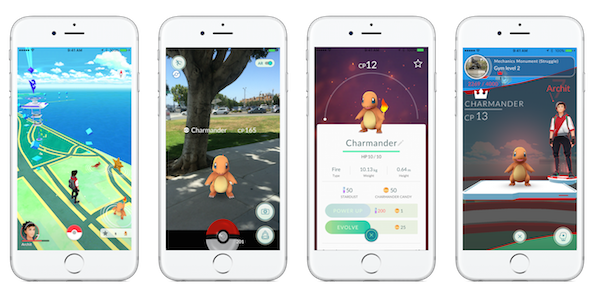
Figure 2: Screenshots from the app Pokémon Go.
Pokémon creatures can only be discovered when the player scans the environment with the camera on a mobile device (Figure 3). This function is provided by the AR merging technology provided by the app. Locative functions also allow for more interactivity. Pokemon Go is constructed in a way that motivates players to walk outside and move the avatar in the game to collect and discover more items.
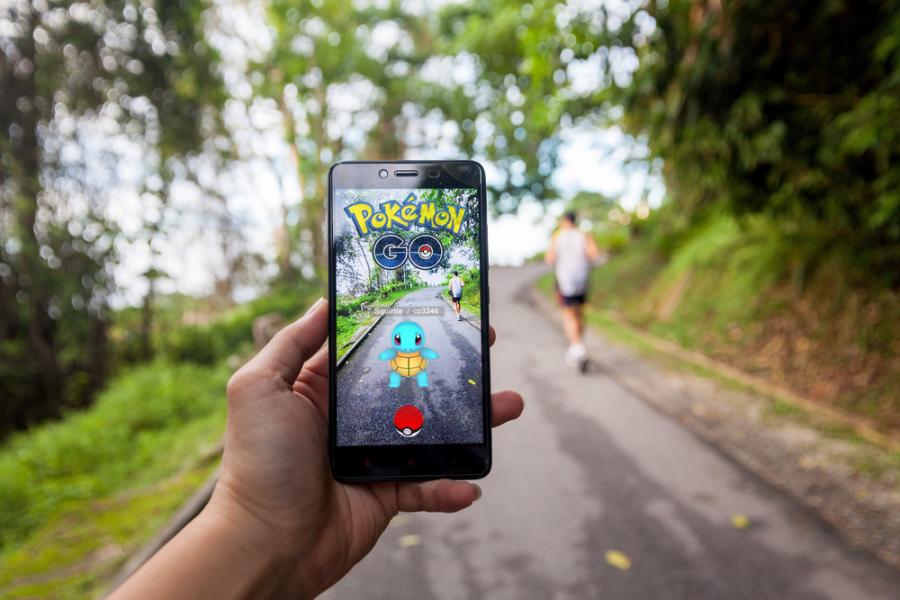
Figure 3: AR technology in Pokémon Go.
Pokémon Go and the contemporary Internet
Augmented reality and locative media influence the development of the contemporary internet. One of the positive aspects of Pokémon Go and similar applications is that they expand the boundaries of the physical spaces that people are used to inhabiting in their everyday lives. By merging the real and the virtual, the app creates unique alternative spaces, renewing the inportance of geography (Hou, 2019). As users’ public and private spaces get unified, the importance of proximity is restored, on the internet and beyond (Hou, 2019). It changes how people feel the internet. Users are never absent from the online environment anymore; they are constantly connected (Hou, 2019). The notion of space becomes increasingly digitized.
Pokémon Go also increases the feeling of belonging to a community as players chase the same goals. The application was referred to as a “social media phenomena” which has brought together people from different backgrounds (Duffy, 2016). It has been reported that “400,000 Pokémon Go players took part in [game-related] events in Chicago, Yokosuka, and Dortmund in the summer of 2018” (Iqbal, 2019).
Pokémon Go players share and discuss their successes online, and visit the same location for in-game activities, such as item collection (Figure 4). An important aspect of the game is that the app incentivizez players to gather at the same place and time for new rare Pokémon, which in many cases has disrupted life in the area. Hence, although the app is collective, it’s also manipulative in its nature. It can guide players decisions and has an actual impact on the public life at the specific physical space.
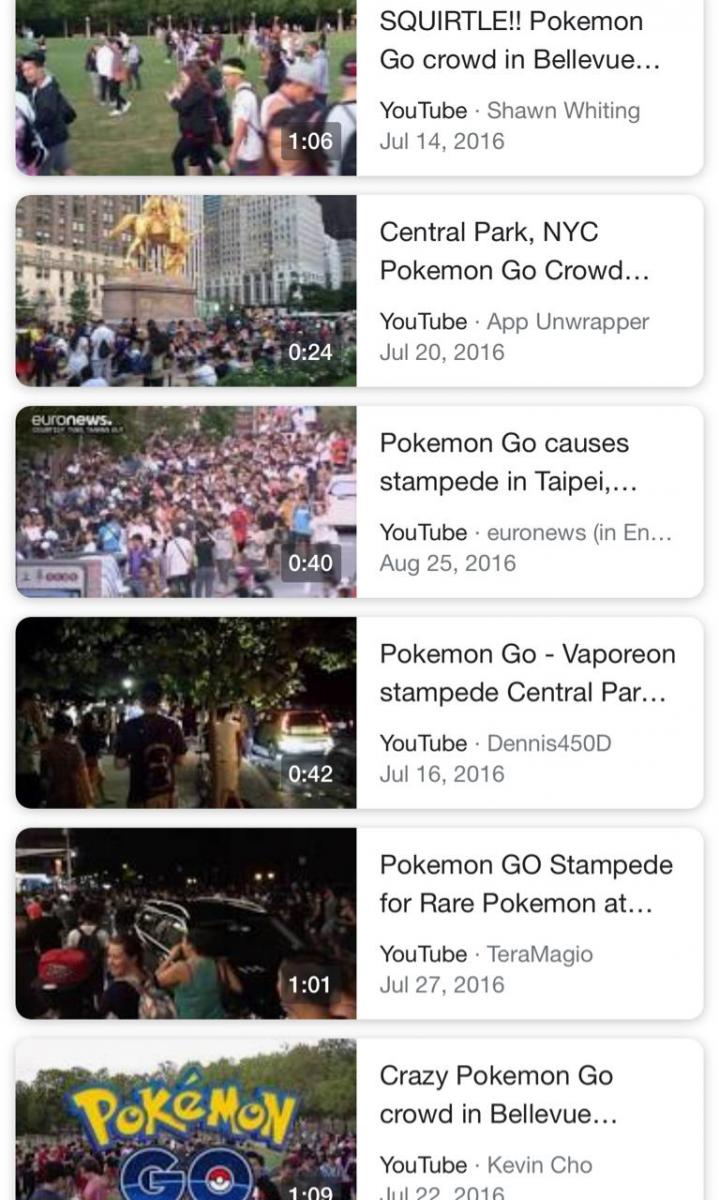
Figure 4: The crowd chasing rare Pokémon creatures in the app.
One way in which locative apps have an impact on the internet is that virtual and real spaces get even more connected to each other, as they overlap and expand one another. This leads to the development of even more advanced technologies that would implement computerized elements into our everyday lives. This goes beyond games, as it extends to, for example, health data, commercials, environmental statistics, and news. The artwork “Hyper-Reality” by Keiichi Matsuda (2016) is a good visualization of possible future developments.
The downside of Pokémon Go is that the app motivates the increase of internet- and screen time as it supports the switch “from personal to pervasive computing” (Hou, 2019). It motivates users to take their devices wherever they go (Hou, 2019). Such excessive use of mobile phones and tablets can cause health issues and internet addictions. The consequences go beyond the online environment; users can experience emotional burnouts and feel stressed out when their internet connection is off and they cannot use the application anymore. In extreme cases, highly addicted users can also struggle socially. Pokémon Go highly contributes to the increase of screen addictions, as it was designed to motivate the excitement of collecting items so that players struggle to stop, as they keep wanting more (Chamary, 2016).
The beneficiaries of Pokémon Go
The combination of virtual and material dimensions plays a huge role in the development of various spheres of society. This section will discuss a variety of consequences the app has had for individuals and companies somehow involved with the app. Pokémon Go's popularity has triggered implications for social, cultural, and financial lives. I will elaborate on users, stakeholders, developers, third parties, and local businesses.
-
Users
Pokémon Go players can feel the expansion of their physical world as they have to go beyond the ordinary places they were used to. The application also makes its users look at ordinary places from new angles. It triggers curiosity, and the excitement of exploration. Pokémon Go makes its players discover new things about familiar places, combining virtual with real.
The application encourages its players to physically move around and explore their cities. Some studies show that playing Pokémon Go increases the overall physical activity per day. Althoff, et al (2016) report that within a period of 30 days, active users reached 1473 more steps daily, on average. This number means that “Pokémon Go has added a total of 144 billion steps to US physical activity” (Althoff, 2016). After its launch, Pokémon Go was said to contribute to the daily physical activity of users of all ages, genders, weight status, and prior physical development levels. It has been counted that “Pokémon Go players walked 8.7 billion km collectively in 2016 – enough to get to the end of the Solar System” (Iqbal, 2019): quite an impact is for a gaming locative AR app.
Worldwide, fans of the game enjoy their experience of playing Pokémon Go. Not only do they spend their leisure time with the app, they can also meet a lot of like-minded people on forums discussing the game. Fans consist of those who used to watch the Pokémon cartoons more than a decade ago, as well as those who have only discovered the creatures recently with the help of the game. There are hundreds of forums on which the application is discussed online. They are based in different countries and dedicated to various topics (Figure 5).
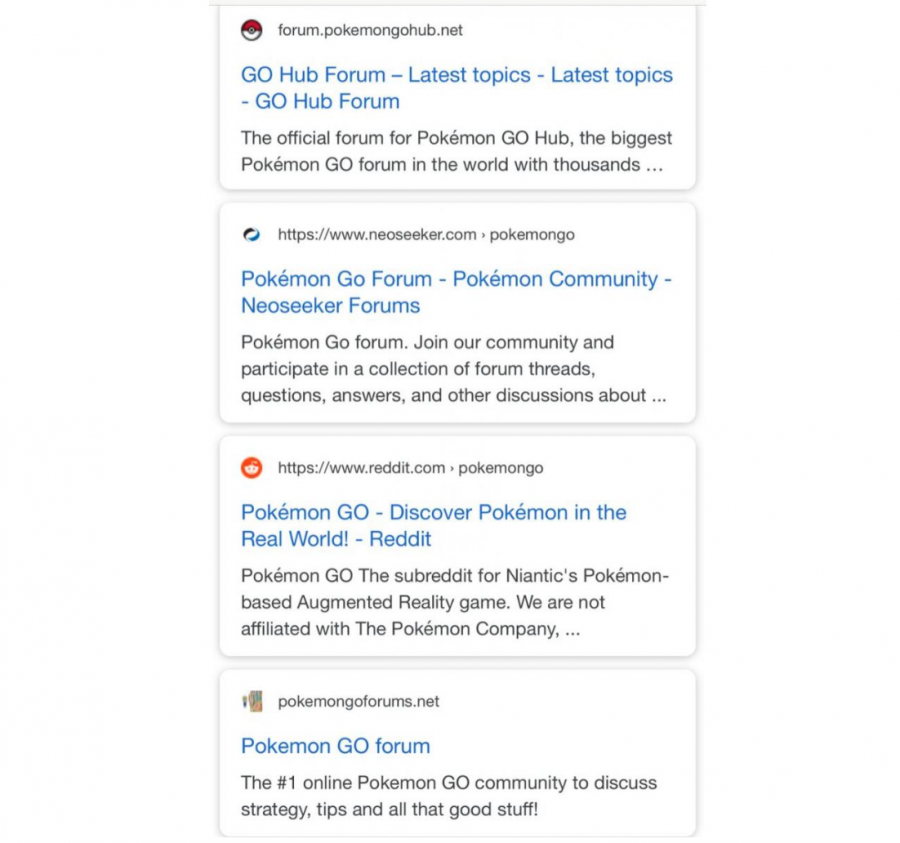
Figure 5: Numerous forums on Pokémon Go online.
-
Stakeholders
Benefited the most from the app have the stakeholders of Pokémon Go. Nintendo, whose successes in the market were quite limited in the years prior to the Pokémon Go launch, has experienced a rapid shift in its net worth. The financial reports show that Nintendo, with only around ⅓ of the stakes in Pokémon Go (Blumenthal, 2016), had its share price grow up 50% within a few months after the game’s release (BBC, 2016). The result of this growth: billions of profit for the company.
-
Other locative AR applications
The popularity of Pokémon Go has also raised interest in other apps with a similar concept. A few years after the success of Pokémon Go, Niantic launched a game with similar features, Wizard Unite. The new app merges physical space with the heroes and concepts from the Harry Potter and Fantastic Beasts universe.
The new AR locative applications also require more jobs for people who develop and manage them. In such a way, the economy benefits from Pokémon Go and similar apps due to the creation of new labour opportunities for young specialists.
-
Big Data collection and Third Parties
Pokémon Go, as well as its kindred applications, collects users’ data. As the app’s privacy policy states, the creator of Pokémon Go, Niantic, is responsible for deciding how users’ data will be used (Niantic, 2019). This includes giving third parties access to the information, which can result in targeted advertising.
Targeted advertising based on the app’s data is quite profitable for third parties. Pokémon Go has access to sensitive data about its users. For example, the app constantly tracks individuals’ locations, which can identify users’ preferences and interests. Pokémon Go knows where you live, which gym you attend (and how often), and the address of your workplace. While it is financially beneficial to the app’s managing companies and the third parties who buy users’ data, it is questionable whether it is safe for individuals to use the app, in terms of security and privacy.
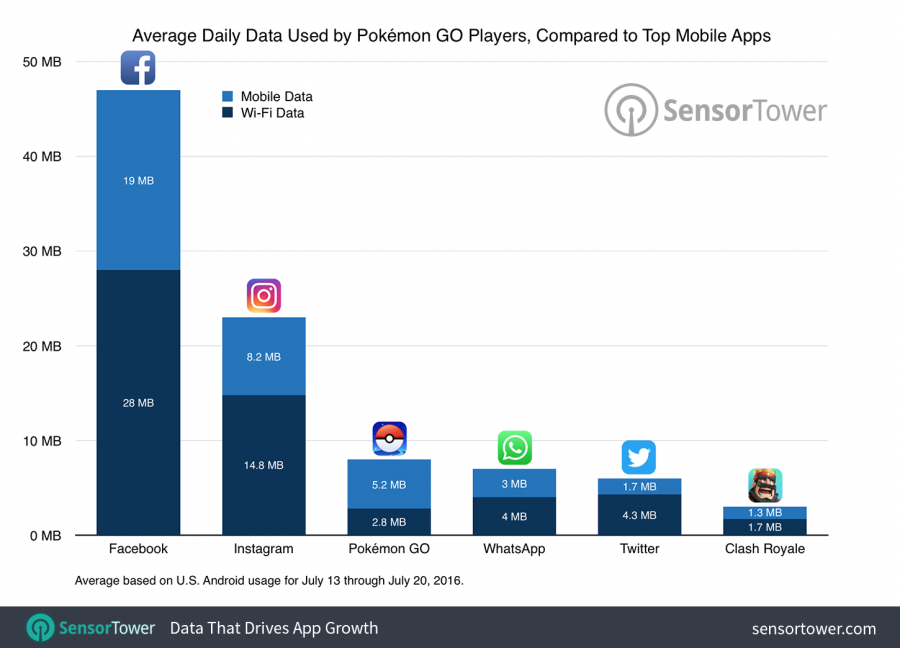
Figure 6: The usage of Pokemon Go comparing to the other apps in 2016.
Since Pokémon Go requires the usage of the camera to catch the creatures, a lot of data are collected about the areas where people go, as well as about the people who frequent it and accidentally appear in the camera's focus. The app is also able to monitor how certain locations change throughout time. Some individuals have been asked to stop their attempts to catch Pokémon at police stations and other strategic objects (Plante, 2016). In 2016, a number of governments expressed security concerns and put constraints on where the app can and cannot be used.
-
Local Businesses
Pokémon Go has helped local businesses grow. The reports show that whenever the app located its Pokémon creatures in a specific neighborhood, the profits of its local shops and offices increased immediately (Uzialko, 2016). The number of customers and attention generated for these businesses was influenced by the app, highlighting the social and economic significance of Pokémon Go.
Thus, analyzing the case of Pokémon Go, as one of the most prominent AR locative applications, we can see the multiple spheres it has influenced. It has impacted players on the individual level, has benefited the companies involved, and has contributed to the development of the economy. The technology behind Pokémon Go and similar apps removes the limitatons that come with operating in the online dimension only. On the contrary, it has gone far beyond, and has impacted the everyday lives of societies.
Socio-political significance of Pokémon Go
As has been shown in the previous sections, AR locative applications, such as Pokémon Go exert strong sociocultural, economical, and political influence on both individual and societal levels. Zuboff understands Pokémon Go as an example of Surveillance Capitalism. Pokémon Go, because of its rapid popularity, has also sparked a lot of concerns and debates.
First of all, regarding the social significance of the app, it has triggered governments to discuss the regulation of its usage. Some countries have issued guidelines to the effect that Pokémon Go cannot be used in sensitive spots. The app has been asking its players to use Pokémon Go ethically and avoid certain spaces, such as Holocaust museums and War memorials (D'Anastasio, 2016).
Pokémon Go has also sparked accidents and criminal activity. The Dutch government has asked players catching Pokémon creatures at railways to be cautious (Middleton, 2016). In another example, “In the first month of release, 290 UK crimes were connected with Pokémon Go” (Iqbal, 2019). The app can, thus, have serious consequences in players’ everyday lives. Even though Pokémon Go continuously contributes to the expansion of community experience and increases physical activity, such apps can carry social dangers, too.
Applications like Pokémon Go intervene in our daily reality. There are fewer and fewer ‘app-free’ locations. The growing tendency is that social spaces become increasingly interconnected with the internet, mediatized, and automatized. Physical spaces and objects become tied to the sensing, receiving of, and responding to information (Hou, 2019), and app developers try to implement more of these innovations in their new creations. This process is natural because AR locative technologies improve storytelling, expand new artforms, and contribute to sociocultural developments. With the help of material objects such as mobile devices, players can access a new, immaterial and augmented world. AR locative media, thus, open a whole range of new opportunities in a number of spheres.
The position of AR now and in the future
By looking at Pokemon Go, as one of the most striking examples of the usage of AR locative applications, this paper has analyzed the social, cultural, political, and individual consequences of technology in everyday lives. By using AR and the tracking of location, its creators have been able to develop an application with a concept that has attracted massive social attention and popularity from its first days on the market. The current essay has demonstrated the actual influences AR locative programmes can have on society, with attention to the diverse character of this influence.
AR locative media can directly impact many different spheres of social life, with both positive and negative outcomes. The technology has increasingly maximized its significance. Pokemon Go illustrates the numerous possibilities AR and locative technologies bring with them. The world of these new developments is expected to keep growing in the upcoming years. The wide interest of users in Pokemon Go shows there is huge social demand for similar technologies in everyday life.
References:
Althoff, T., White, R. W., Horvitz, E. (2016). Influence of Pokémon Go on Physical Activity: Study and Implications. JMIR Publications.
BBC, (2016). Nintendo shares up more than 50% since Pokémon Go release.
Blake, V. (2019). Pokémon Go revenue is up 84% YoY as it earns $68m in January 2019. MCV.
Blumenthal, E. (2016). Investors learn Nintendo doesn't own Pokémon, stock tanks.
Chamary, J. V. (2016). Science Explains Why You're Addicted To Pokémon GO. Forbes Science.
D'Anastasio, C. (2016). You Can No Longer Catch Pokémon At Hiroshima's Memorial Or The Holocaust Museum. Kotaku.
Duffy, C. (2016). What is social media phenomenon Pokémon Go? ABC News.
Hou, M. (2019). Media Art. [PowerPoint Slides].
Iqbal, M. (2019). Pokémon GO Revenue and Usage Statistics (2019). Business of Apps.
Matsuda, K. (2016). Hyper-Reality. Vimeo.
Middleton, R. (2016). Pokémon Go: Dutch rail operator tells Nintendo to change game after players wander onto tracks. International Business Times.
Niantic. (2019). Niantic Privacy Policy.
Plante, C. (2016). Pokémon Go sends players to police station, police say don’t come in. The Vegre.
Swatman, R. (2016). Pokémon Go catches five new world records. Guinness World Records.
Uzialko, A. C. (2016). Small Businesses Catch a Boost from Pokémon Go. Business News Daily.
Webster, A. (2019). Pokémon Go spurred an amazing era that continues with Sword and Shield. The Verge.
Zuboff, S. (2019). The Age of Surveillance capitalism. The fight for a Human Future at the new frontier of Power. Polity.